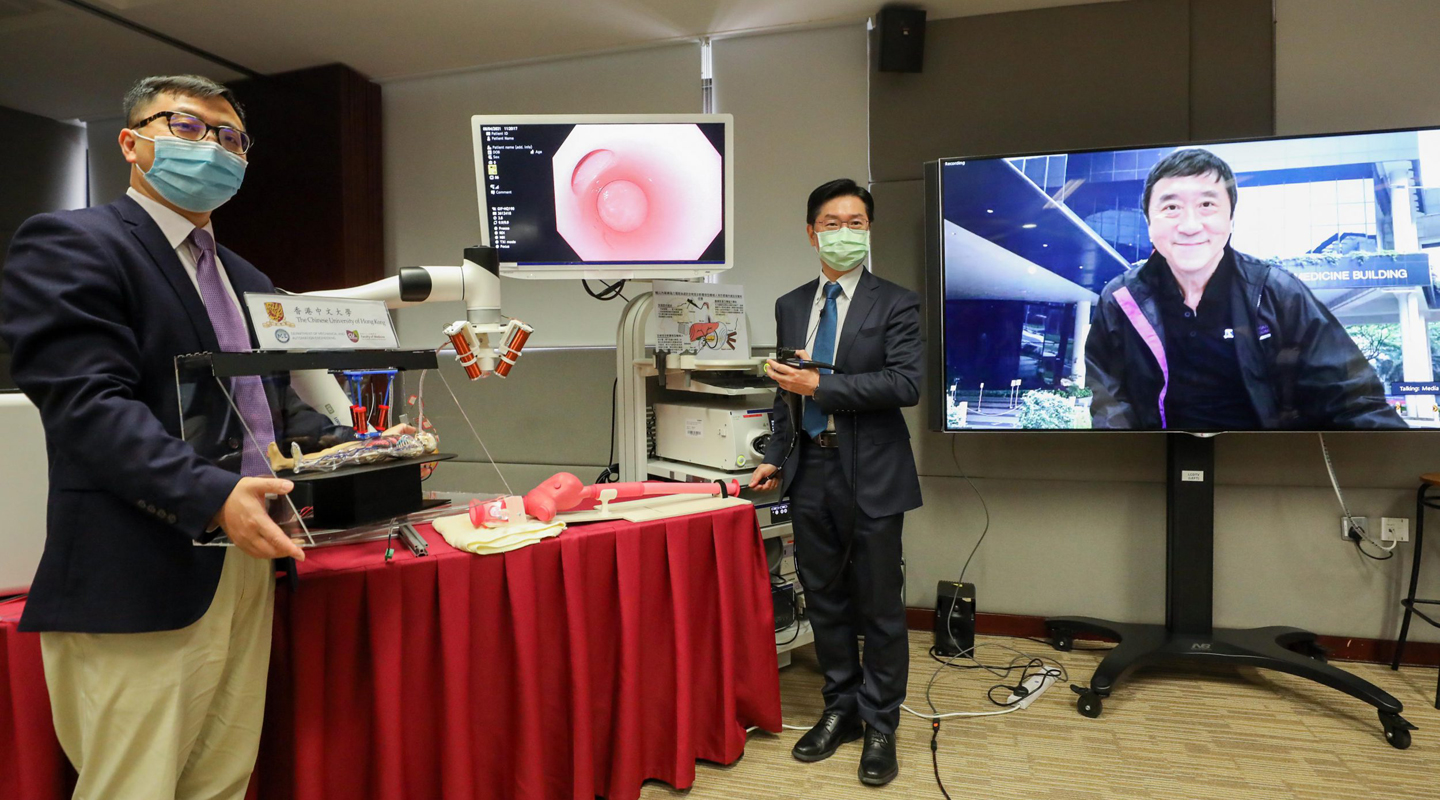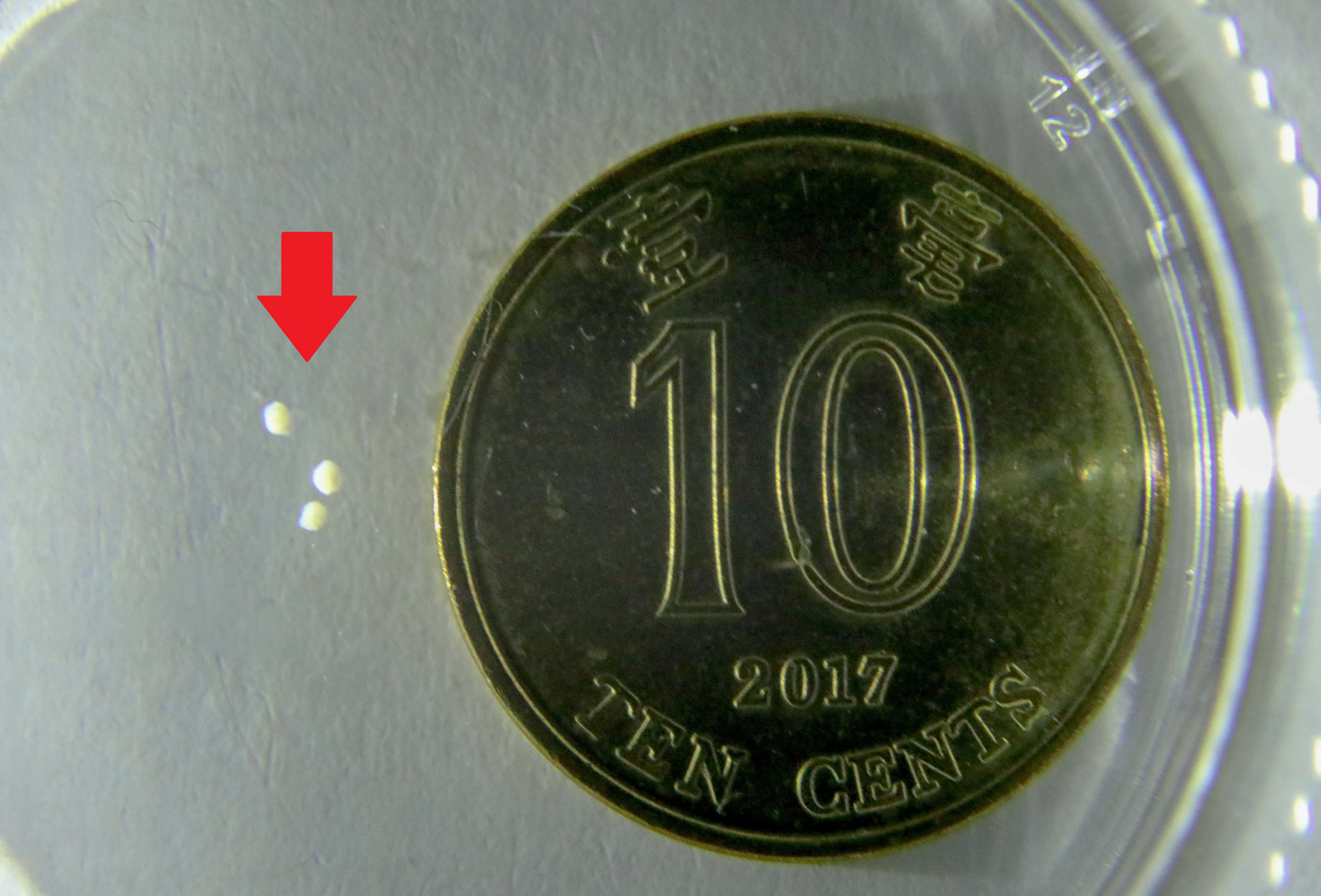Dear readers, With the launch of e-newsletter CUHK in Focus, CUHKUPDates has retired and this site will no longer be updated. To stay abreast of the University’s latest news, please go to https://focus.cuhk.edu.hk. Thank you.
Deep-going Deus ex Machina
Microrobots navigate the body’s labyrinthine pathways

The human body is a harrowing mystery; more harrowing still are culprits lurking in its tiny and tortuous pathways, eluding all attempts at identification and dealing a blow deep when things get out of hand. Mini-robots fathered by a joint research team under Prof. Zhang Li, Department of Mechanical and Automation Engineering, Prof. Joseph Sung and Prof. Philip Chiu, Faculty of Medicine, manage to reverse the downward spiral as they go to the remotest and formerly inaccessible spots in the body, confront the all-too-cunning antagonists and drop a payload of drugs on them.
Ninety-eight per cent of them being stem cells and 2% magnetic particles, the spheroid mini-robots are all but hair-thin: while an endoscope is nine to 10 millimetres thick, a robot has a diameter of 100 to 500 micrometres, i.e., 0.1 to 0.5 millimetres. The invisible agents can penetrate the infinitesimal branches of the digestive system, the brain, the bile duct, the pancreatic duct, the prostate and the bronchial tree that prove unreachable by regular medical instruments. Soft as the human brain, they are free to alter their shapes when coursing through even narrower cavities. The stem cells being taken from the patient, immune responses would assuredly be lowered to a minimum.

Take the bile duct test for an example: first, an endoscope would serve as an express which swiftly takes the robots to the duct opening. In this way, organs and tissues are circumvented and contacts with the body processes avoided. The magnetic field is then activated to guide the robots to the deeper recesses of the duct, their navigations tracked all the way by endoscopy or ultrasound imaging. The stem cell infantry is able to advance one metre in eight minutes, a marvellous pace hitherto achieved in the field. Screening aside, the robots may also carry drugs to the trouble spots, making the treatment more targeted and hence reducing the dose needed. Within one or two years animal studies would convene for this novel approach, followed by clinical trials in three to five years.